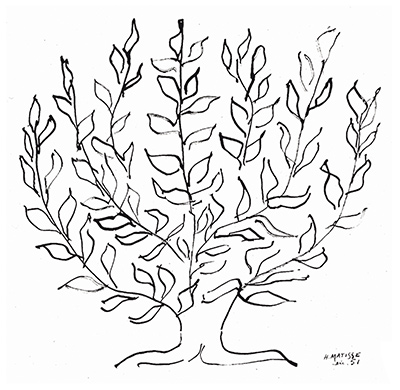Le Platane is the 1951 serigraph by Henri Matisse, the French artist who helped revolutionise modern art in the 20th century.
In the late 1940s and early ‘50s, his drawings become bolder, the contour line thicker, the forms even more simplified and devoid of detail.
Le Platane shows a plane tree and as Matisse explained to a friend in 1943, illustrates that “the intended space between leaves are as important as the leaves themselves”.
This Platane drawn by Matisse is a draft design for a ceramic intended for the villa of his friend and editor Tériade. It was produced in Matisse’s final years at a time when ill health had forced him to give up traditional painting, in favour of producing decoupage, ‘cut-outs’ and screen prints.
Matisse was involved with printmaking for over 50 years. For him it was a personal process, an extension of drawing, and a means of unwinding after long and intense periods of painting. Like the pages of his sketchbook, Le Platane demonstrates the sense of immediacy and spontaneity in Matisse’s work.
Serigraphy is an art form based on the printing method of silk screening. Stencils are positioned on a mesh screen, paint is poured over the screen, and a squeegee is drawn across the screen to print the paint on the paper below. These works of art exploited the tonal possibilities of the medium that allowed Matisse to achieve works of volume and depth.
Matisse’s work reflects a number of influences: the decorative quality of art, the stylised forms of the masks and sculpture of African, the bright colours of the French impressionists, and the simplified forms of French artist Paul Cezanne and the cubists.




